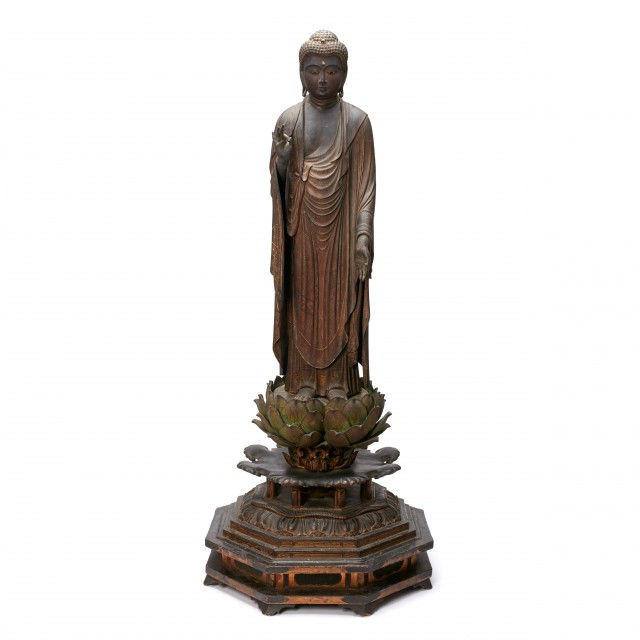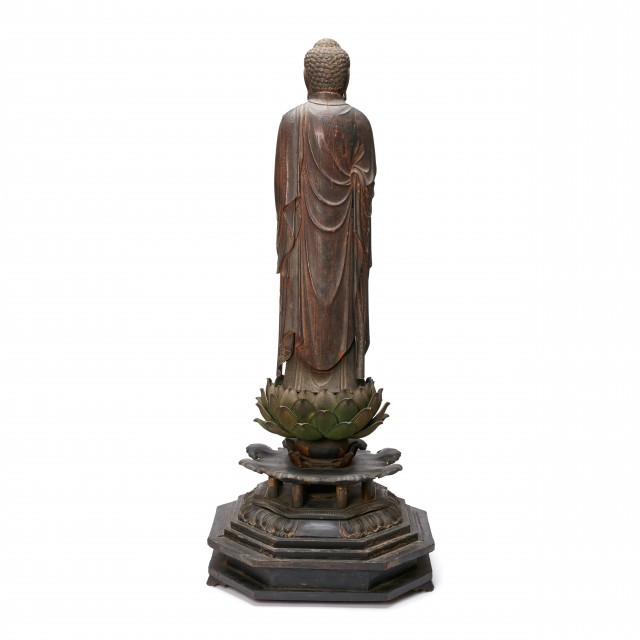Buddha Amitabha (Amida Nyorai)

Photography by Synthescape, Digital image © Asia Society

Photography by Synthescape, Digital image © Asia Society
Buddha Amitabha (Amida Nyorai)
Mid- to late 13th century
Japan
Cypress wood with traces of pigment and cut gold leaf, and with inlays of crystal
H. 47 x W. 20 1/2 x D. 20 1/2 in. (119.4 x 52 x 52 cm)
Asia Society, New York: Mr. and Mrs. John D. Rockefeller 3rd Collection, 1979.204a-b
Provenance
John D. Rockefeller 3rd, New York, NY; acquired from Setsu Gatodo Co., LTD., Tokyo, Japan, July 31, 1971.
The Asia Society, New York, NY, bequest of John D. Rockefeller 3rd, New York, NY, 1979.
Licensing inquiries
This statue of Amida (Sanskrit Amitabha Buddha), the Buddha of the Western Paradise, performs the gesture of teaching (vitarka mudra) with both hands. In East Asia, these gestures signify Amida's welcoming descent from heaven (raigo) to greet the soul of a faithful devotee at death. Images of his descent to earth illustrate the nineteenth of forty-eight vows made by Amida in a previous life, in which he promises to appear at the moment of death to all beings who devoutly desire rebirth in his paradise. Painted and sculpted versions of this theme first became popularized in Japan during the 12th century and were placed near the deathbed of a devotee so that he or she could see it.


